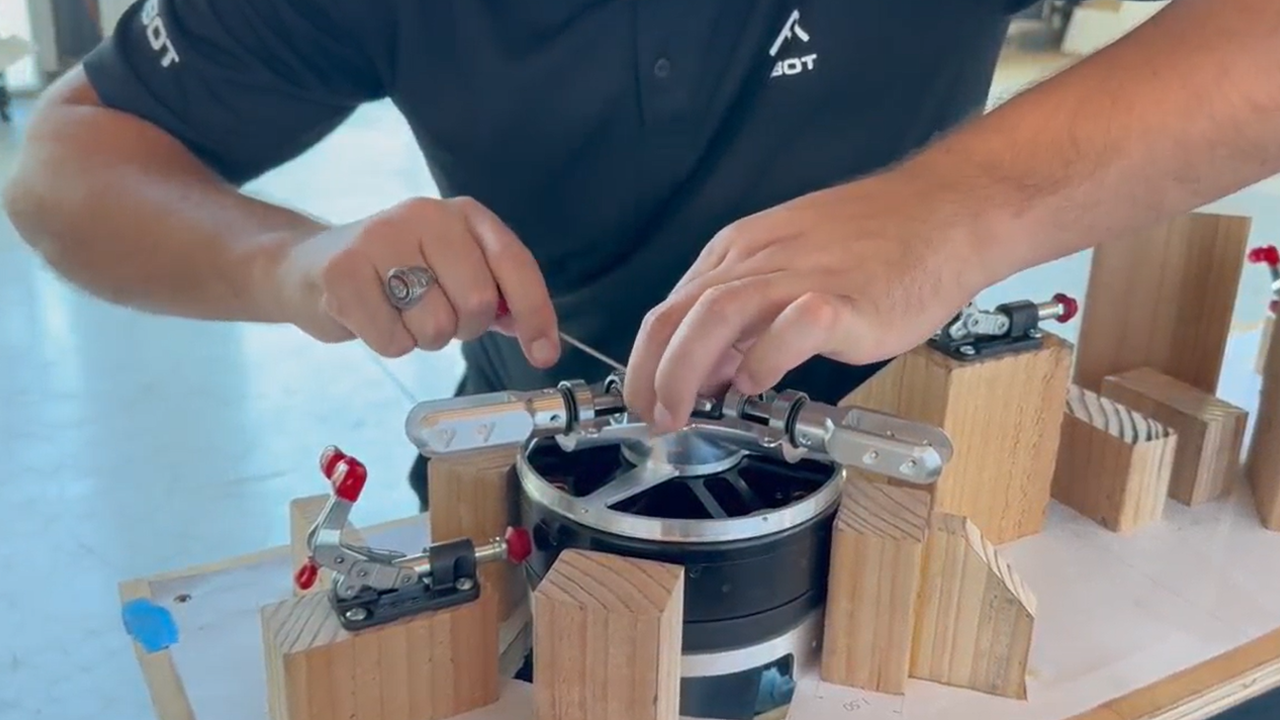AIBot has emerged from stealth mode with plans to introduce a seven-seat eVTOL aircraft with highly automated flight controls powered by artificial intelligence (AI). While AIBot is not yet ready to share many details about the design of its AI-powered eVTOL aircraft, the company revealed last month that it will use Honeywell’s compact fly-by-wire flight control system. Having recently received a $15 million award from the California Competes grant program, it is preparing to launch a funding round in January, AIBot chief engineer John Clarkson told AIN.
Clarkson explained that AIBot is developing a seven-seat eVTOL air taxi as well as a smaller uncrewed aerial vehicle (UAV), or drone, with a similar configuration. The Long Beach, California-based company has already built and flown five subscale technology demonstrators and intends to reveal its first full-scale prototype in the next two years, he said. AIBot aims to bring a remotely piloted drone to market by the end of 2024, with a single-pilot, six-passenger eVTOL air taxi to follow in 2028 or 2029.
Automation Before Artificial Intelligence
Eventually, AIBot aims to introduce fully autonomous and pilotless versions of each aircraft with new AI capabilities integrated into the flight controls, such as a detect-and-avoid system. But until air safety regulators decide on how to certify novel AI technologies, human pilots will still be required.
“AI is a tricky subject for the aviation authorities because it's nondeterministic software,” Clarkson told AIN. “We are working with the FAA and EASA to ensure that we have a good roadmap to AI being incorporated into the aircraft, but up to that point, we will be developing conventional but high-tech, cutting-edge software,” he said. “Until the regulatory environment allows it, AI will be developed in the background and it won't be part of the primary commercial product until it's approved,” which likely won’t happen until after 2030, he added.
Even without AI capabilities, AIBot’s autopilot system is so highly automated that the aircraft essentially flies itself, so the pilot’s role will become mostly supervisory. A pilot can choose to take over manual control of the aircraft at any time. “If [a pilot] wants to fly it manually, then it'll be up to him. We'll have a lot of automation systems in the background making sure that he does it safely, but at the end of the day, he can either hand it all over to the aircraft or do some of it himself.”
Honeywell's Compact Fly-By-Wire System Was Designed for UAM
For the flight controls, AIBot chose Honeywell’s compact fly-by-wire (cFBW) system because the lightweight equipment provides more flexibility in the aircraft’s design without compromising on power—and it can be used for remotely piloted operations. It has features derived from Honeywell's fly-by-wire systems for larger airplanes, all packed into a device the size of a book. This makes it particularly well suited for Part 23 airplanes, eVTOL aircraft, and other urban air mobility (UAM) vehicles, according to Honeywell. Lilium has also selected the Honeywell cFBW system for its Lilium Jet eVTOL aircraft, and Pipistrel is using the system in its Nuuva family of cargo UAVs.
“Our compact fly-by-wire system is a ready-now solution to advance the future of sustainable flight. It is derived from decades of expertise providing similar systems for commercial airliners,” said David Shilliday, v-p and general manager of Honeywell Aerospace’s advanced air mobility division. “The collaboration will enable AIBot to realize its vision of creating a sustainable and efficient transportation ecosystem.”
AIBot's eVTOL Specifications: What We Know So Far
Although AIBot has not revealed the exact configuration of its aircraft, we know it has eight motors and a fully electric powertrain. According to the company’s website, the passenger-carrying version has a 47-foot (14-meter) wingspan, a maximum takeoff weight of 7,000 pounds (3,200 kilograms), a payload capacity of about 1,000 pounds (450 kilograms), and a range of 250 miles (400 kilometers).
The drone is significantly smaller, with a wingspan of 17 feet (five meters), a maximum takeoff weight of 800 pounds (360 kilograms), and a payload capacity of 250 pounds (110 kilograms). It is intended for aerial surveillance for police and forestry applications, and it could transport medical supplies and other time-sensitive cargo to remote and last-mile destinations.
As AIBot works to expand its research and development activities in California with the help of a $15 million government grant, the company is also collaborating with NASA via a non-reimbursable Space Act Agreement signed on September 29. The agency has enlisted AIBot for a collaborative research project to “demonstrate a method for identifying eVTOL aircraft aero-propulsive models using flight test data” together with researchers at NASA Langley Research Center in Hampton, Virginia.
The company aims to obtain a G1 issue paper from the FAA for its passenger-carrying eVTOL aircraft by the end of 2024, and it plans to begin flight testing with a full-scale prototype in 2025. While several competing eVTOL developers are aiming to have their aircraft certified and in service by that time, Clarkson said the later timeframe for AIBot’s entry into service could work in the company’s favor. “Because we are just about to start our certification journey, we don't have to freeze our technology for another year, which means that we can utilize the latest and greatest that's out there across all aspects of the design.”
AIBot was founded in 2022 and remained in stealth mode until October when it began engaging with NASA and the FAA. The company made its first hover flight with a 20 percent-scale demonstrator in July 2022 and achieved its first full transition flight—in which an eVTOL aircraft transitions between vertical and horizontal propulsion—just four months later. After one year of remotely piloted flight tests, the company achieved its first fully autonomous takeoff and landing in July 2023. Now the company is flying with a 500-pound demonstrator aircraft as it continues to develop and refine the design of the full-scale aircraft it intends to reveal next year.
